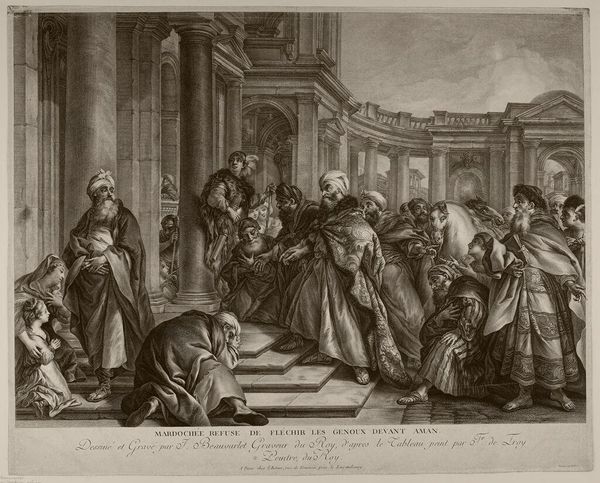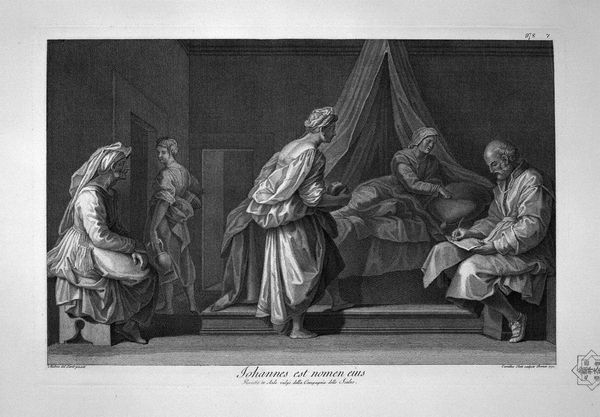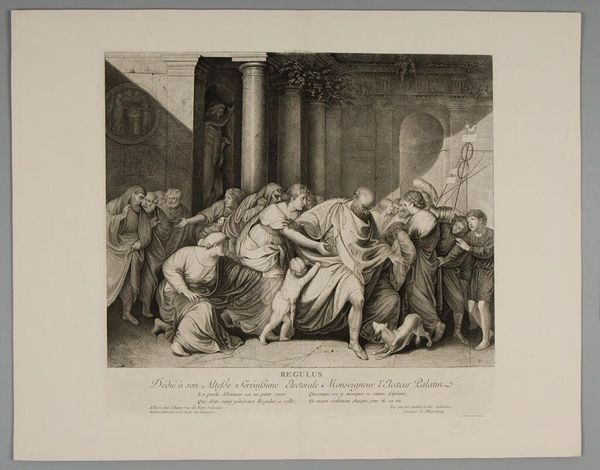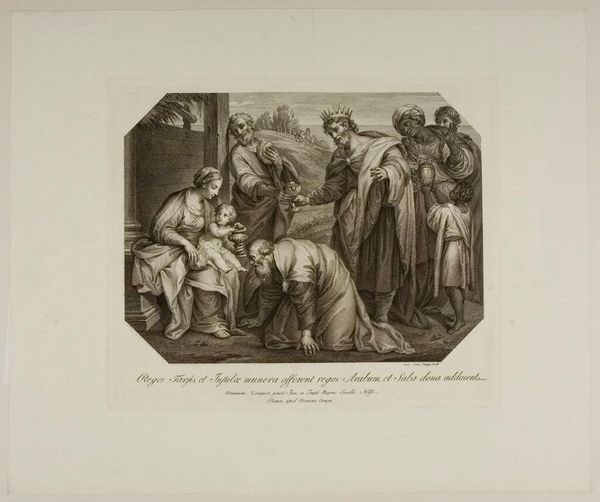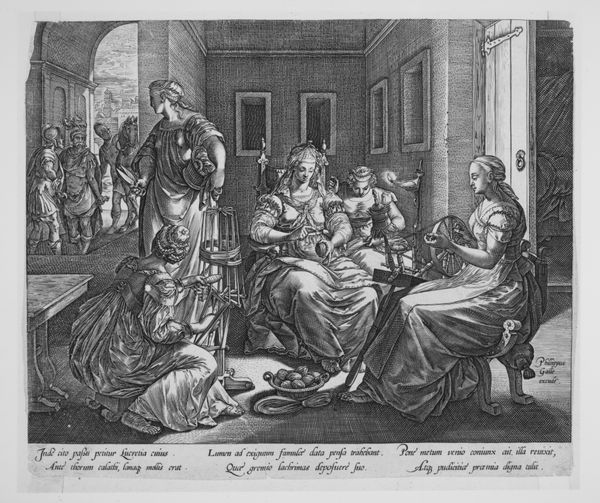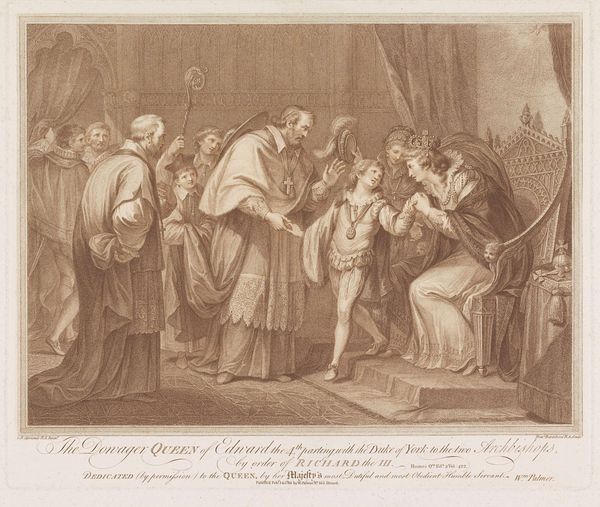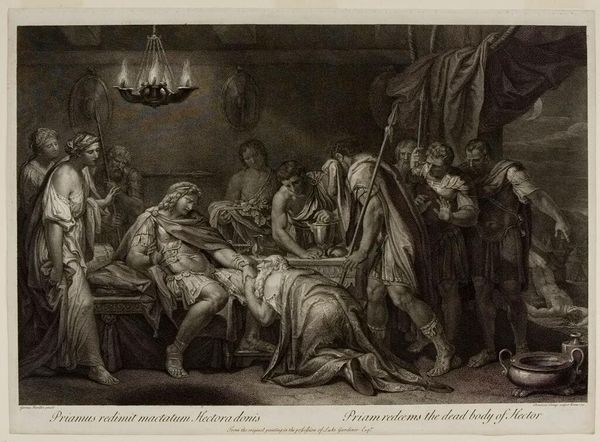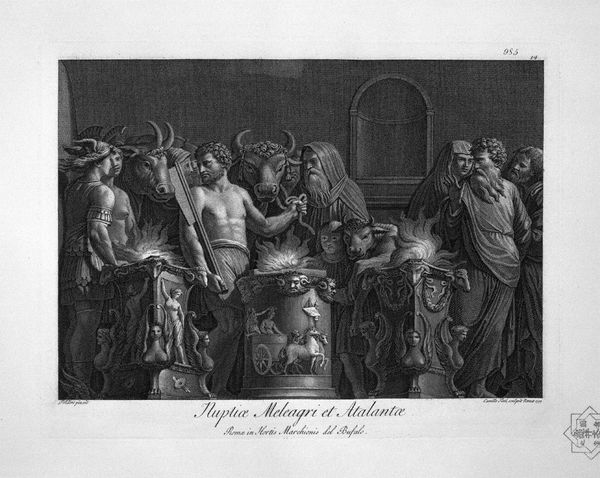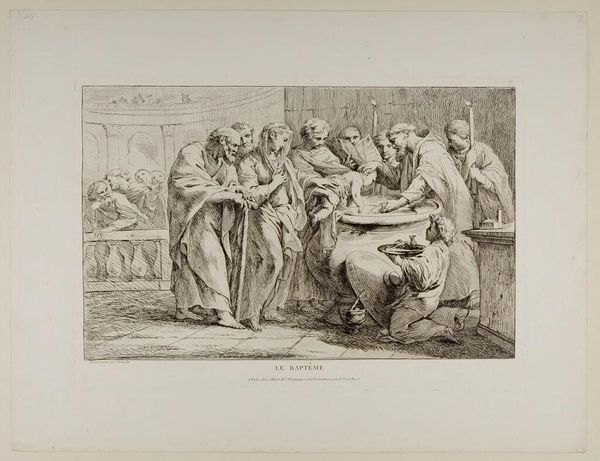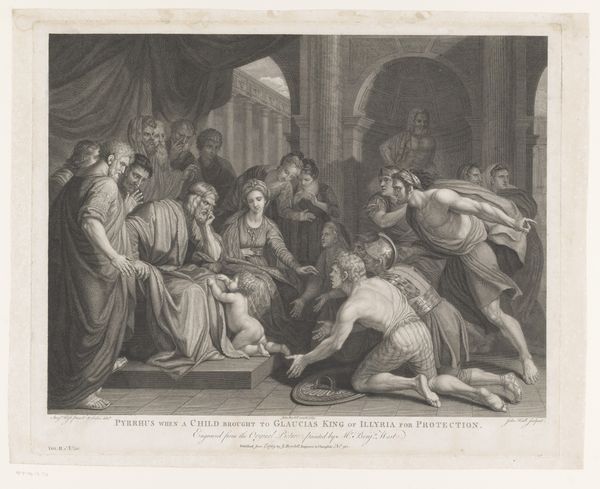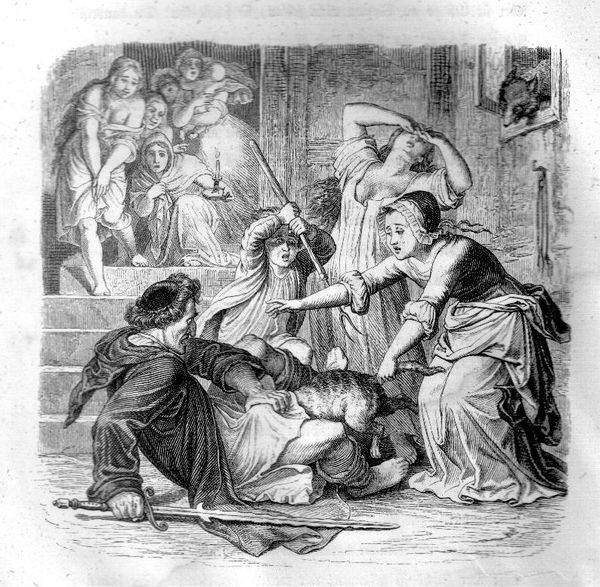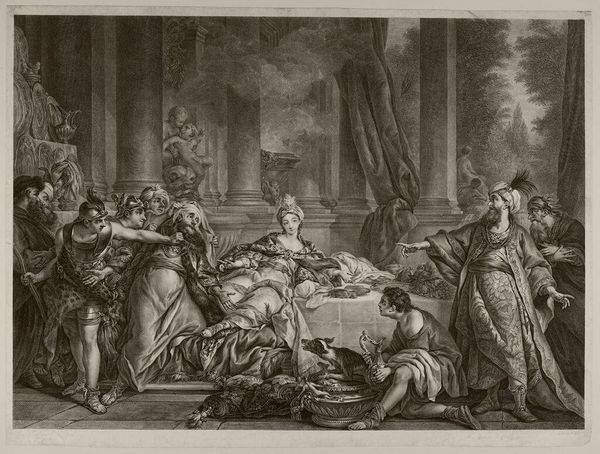
print, engraving
#
allegories
#
narrative-art
#
baroque
#
symbol
# print
#
figuration
#
form
#
limited contrast and shading
#
line
#
history-painting
#
tonal art
#
engraving
Copyright: Public domain
Curator: Here we have an engraving by Giovanni Battista Piranesi, called "Allegory of Providence". Editor: Ah, yes! At first glance, it feels staged, operatic almost. Everyone is playing their part. Curator: Precisely. The composition very deliberately evokes theatricality. It utilizes baroque sensibilities. This work offers commentary on power and moral instruction—particularly relevant to the social functions of art in Piranesi’s time. Editor: It's like everyone's paused mid-scene, except maybe that baby. Hope he’s getting paid scale! Though honestly, even with all the symbolism swirling around, it’s hard not to just see…well, more posing than profundity? I'm seeing these static bodies under an oppressive sense of predetermination. Do you think Piranesi questioned this order? Curator: I think he saw the necessity of that order. Through the symbols and dramatic flair, Piranesi engages the viewer in reflecting on societal foundations, and the forces that create a collective identity. This print probably helped establish political connections during its own circulation in the 18th century. The imagery here is both aesthetically compelling and designed for a social function. Editor: But isn't that the point? This work seems intent on creating distance through artificial gravity, so do we feel inspired by civic virtue, or just impressed by an elaborate performance of control? Even those classically draped figures appear uncomfortable—caught between a celestial plan and mere earthly existence. They just seem to fulfill their roles with resigned gestures. Curator: Indeed. Piranesi encourages dialogue around our place in civic duty. Through allegory, the artwork sparks consideration about the relationship between leaders and the social classes they rule. Editor: True. And, as an artist, I will say the detail achieved in this medium—through a network of fine tonal variation, gives me great admiration for the time involved in creating the print itself! All these careful lines working to achieve something sublime. Curator: And it certainly reflects Piranesi’s ambition to construct more than a picture: to forge a narrative of human fate with grand style, offering visual arguments about ethics and power that still invite scrutiny today.
Comments
No comments
Be the first to comment and join the conversation on the ultimate creative platform.
